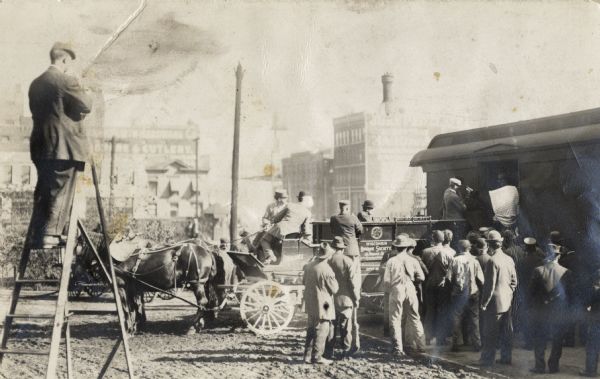We think of the Humane Society as an organization for the protection of animals. But Wisconsin’s organization, founded Dec. 5, 1879, was formed to protect both animals and children. The passage of child protection laws in the early 20th century led the organization to focus primarily on animals.
The movement toward the protection of animals began after the Civil War with diplomat Henry Bergh. The New Yorker traveled the world and was troubled by the mistreatment he’d seen of animals in cities throughout his travels. Sharing what he’d seen, many people became concerned about the abuses suffered by horses, in particular.
In 1866, Bergh and like-minded individuals formed The American Society for the Prevention of Cruelty to Animals formed in New York. Soon unaffiliated groups organized in cities around the country.
Stay informed on the latest news
Sign up for WPR’s email newsletter.
The movement reached Milwaukee in 1879. George T. Angell, president of the Massachusetts Society for the Prevention of Cruelty to Animals, presented to the Fortnightly Club, a lecture club for prominent Milwaukee citizens, and left a deep impression on residents. They formed their own society, the Wisconsin Humane Society, a few weeks later and devoted themselves to the following:
“First, it will prevent cruelty of all animals;
second, it will prevent cruelty to children;
third it will prevent cruelty to criminals and to defective and dependent people.”
The superintendent of the Wisconsin Humane Society was given police powers by the governor to make arrests if necessary. The society did not seek out abuse but investigated and responded to complaints brought to them. A few years after its founding, the Humane Society invested in an animal ambulance to bring injured animals in for treatment.
Chapters formed in other cities, including Madison, by the 1880s. In Madison, members convinced the “meat market men of the city” not to drive their cattle to the slaughterhouse in chains or ropes.
In April 1881, the Weekly Wisconsin reported that the Wisconsin Humane Society often made “bitter enemies” among those that mistreated animals.
“It is a common opinion,” read the story, “that ownership gives a right to abuse or mistreat… Husbands are found who claim as a right that they may abuse their wives; parents are found who claim as a right that they may beat and maltreat their children.”
The Humane Society’s 1881 annual report shows 399 complaints made on cruelty to persons, 164 of which were children. Of these, 218 are listed as being “rescued from abuse.”
Education was a major focus of the group. They helped pass a 1912 law requiring teachers to spend at least 30 minutes each month teaching students the importance of kindness toward animals.
The Wisconsin Humane Society actively lobbied for legislation to protect children. The passage of protective laws, the development of social work as profession, and the formation of new social service organizations for children led the Humane Society to narrow its focus to animals.
Wisconsin Public Radio, © Copyright 2024, Board of Regents of the University of Wisconsin System and Wisconsin Educational Communications Board.


